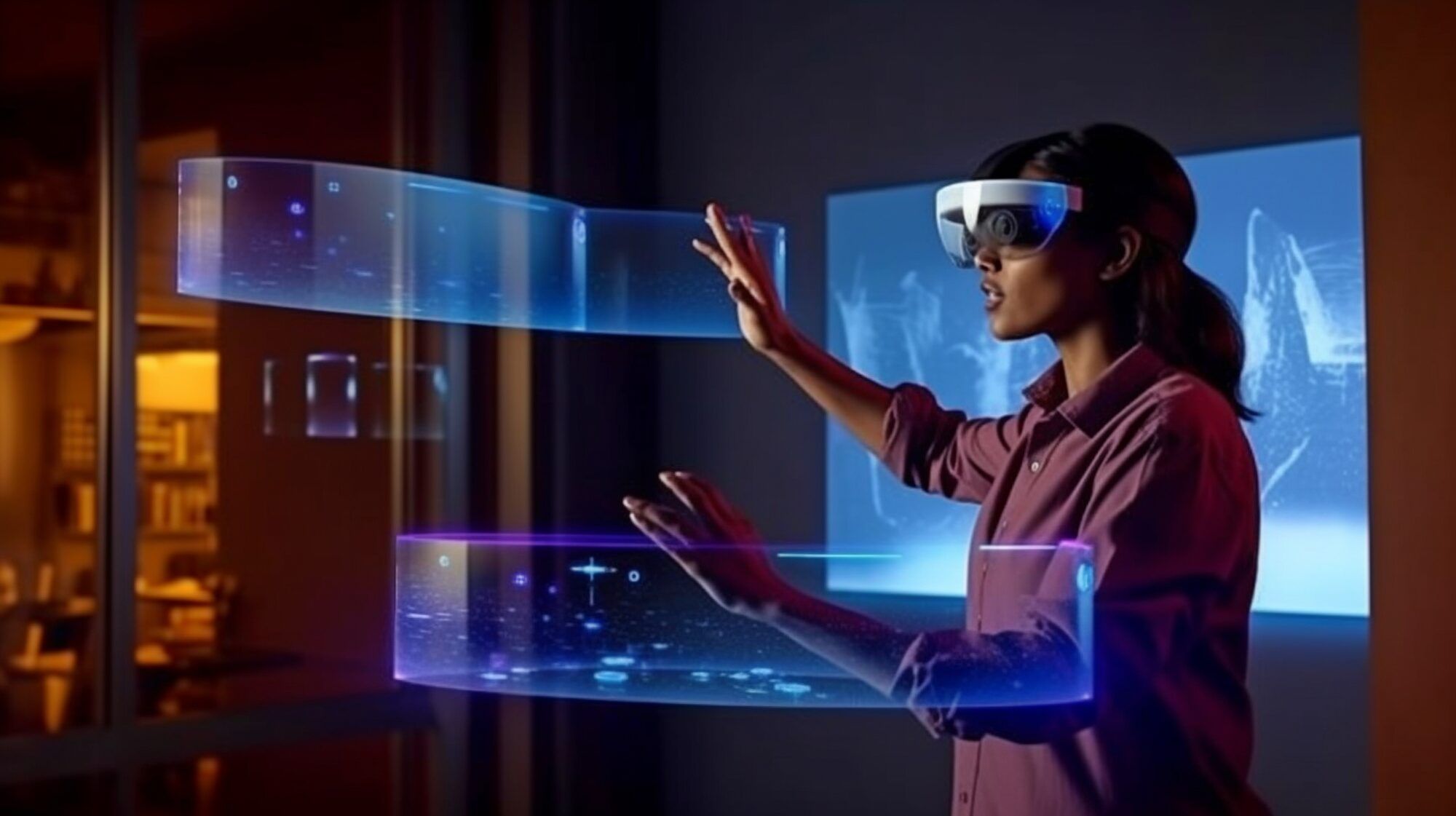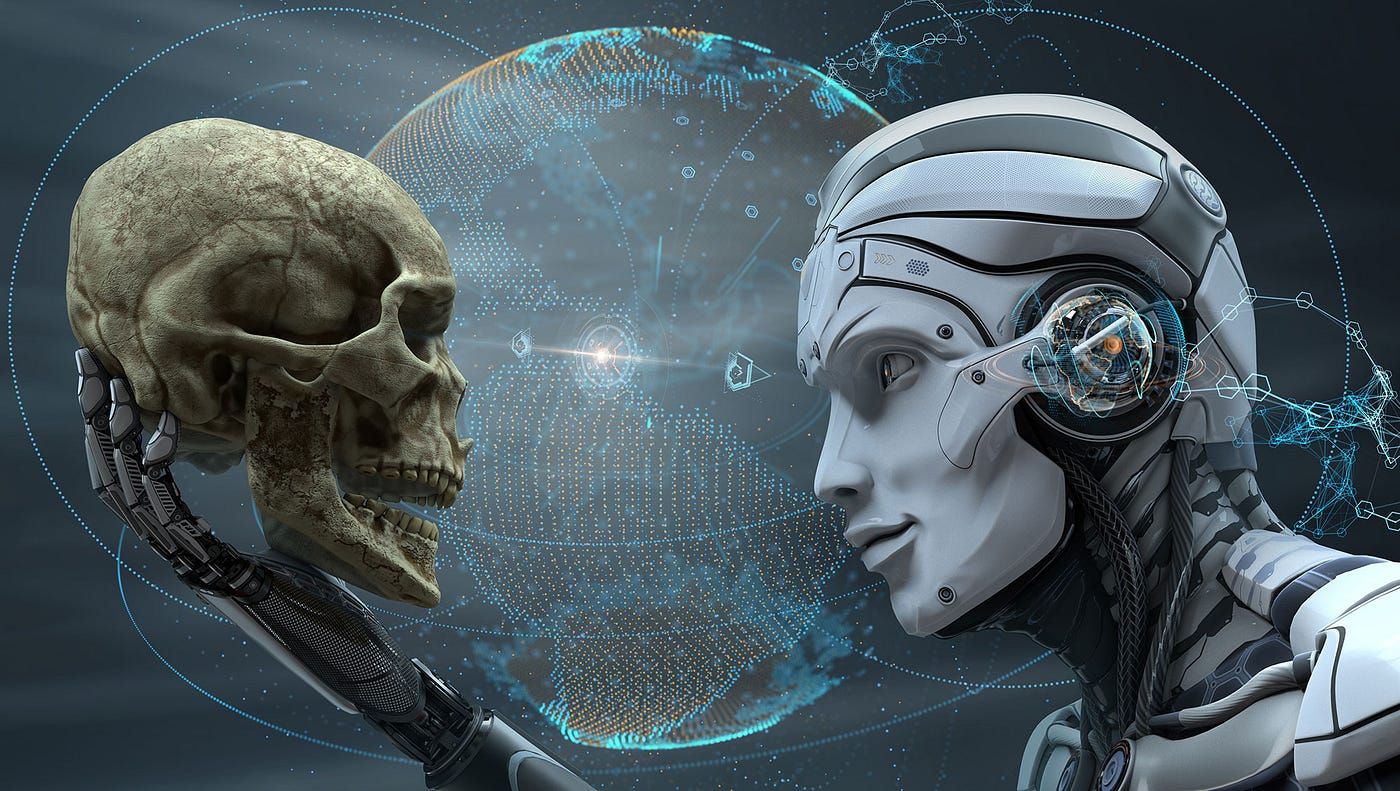The Future of Augmented Reality: Transforming the Human Experience
Augmented Reality (AR) and Virtual Reality (VR) have rapidly evolved from science fiction concepts to transformative technologies impacting various aspects of our lives.

Augmented Reality (AR) and Virtual Reality (VR) have rapidly evolved from science fiction concepts to transformative technologies impacting various aspects of our lives. AR overlays digital information onto the physical world, enhancing our perception and interaction with the real environment. In contrast, VR creates immersive, entirely virtual experiences that can transport users to different realms. As we look towards the future, these technologies promise to revolutionize the human experience in ways we are only beginning to imagine.
Understanding Augmented Reality and Virtual Reality
Definition of AR and VR
Augmented Reality (AR) refers to the integration of digital elements into our physical surroundings, typically viewed through devices such as smartphones, tablets, or AR glasses. It enhances real-world experiences by overlaying images, sounds, and other data.
Virtual Reality (VR), on the other hand, involves creating a fully immersive digital environment that replaces the real world. Users typically wear VR headsets that block out their physical surroundings and immerse them in a computer-generated world.
Key Differences Between AR and VR
While both AR and VR provide immersive experiences, their applications and interactions with the real world differ significantly. AR enhances the real world by adding digital elements to it, making it ideal for applications that require interaction with the physical environment. VR, however, is used to create entirely new environments for users to explore, making it perfect for gaming, simulations, and virtual training.

Current State of AR and VR Technologies
AR and VR technologies have made significant strides in recent years. AR applications are prevalent in mobile devices, offering experiences like Pokémon GO and Snapchat filters. VR headsets, such as the Oculus Rift and HTC Vive, provide high-quality immersive experiences, particularly in gaming and simulation training. Both technologies are continually evolving, with improvements in hardware and software driving their adoption in various industries.
The Future of Augmented Reality
Predictions for AR Advancements in the Next Decade
The next decade promises exciting advancements in AR technology. We can expect significant improvements in AR hardware, such as AR glasses and even contact lenses that offer seamless integration of digital information into our daily lives. These devices will become lighter, more comfortable, and more capable, providing users with richer and more interactive experiences.
Improvements in AR Hardware
The future of AR hardware includes advancements in AR glasses, which will become more compact and powerful. Companies like Apple and Google are rumored to be working on AR glasses that could replace smartphones. Additionally, developments in contact lens technology could eventually lead to AR contact lenses that project digital information directly onto the wearer's retina.

Enhancements in AR Software
AR software will also see significant enhancements, with more sophisticated apps and experiences becoming available. Improved machine learning and AI integration will enable AR applications to understand and respond to the real world more intelligently, offering personalized and context-aware experiences.
Integration of AI and Machine Learning in AR
The integration of AI and machine learning will revolutionize AR by making it more intuitive and responsive. AI can analyze the environment, recognize objects, and provide relevant information in real-time. For example, an AR app could identify a plant and provide information on how to care for it, or recognize a landmark and offer historical context.
AR in Various Industries
Healthcare
In healthcare, AR will enhance medical training, enabling students and professionals to visualize complex procedures and anatomy in 3D. Surgeons can use AR to overlay critical information during operations, improving precision and outcomes. Remote surgeries could become more common, with experts guiding procedures from afar using AR technology.
Education
AR will transform education by offering interactive and immersive learning experiences. Students can explore historical events, conduct virtual science experiments, and engage with educational content in new and exciting ways. AR can also support remote learning, providing engaging and effective education regardless of location.
Retail
The retail industry will benefit from AR through virtual try-ons and personalized shopping experiences. Customers can see how clothes, accessories, or furniture will look without physically trying them on or seeing them in person. AR can also enhance in-store experiences by providing additional product information and interactive displays.
Entertainment
AR will revolutionize entertainment, offering new forms of gaming, interactive storytelling, and live events. Gamers can interact with virtual characters and objects in the real world, while live events like concerts and sports can be enhanced with digital overlays and interactive elements.

Real Estate
In real estate, AR will enable virtual property tours and architectural visualizations. Buyers can explore properties remotely and see potential renovations or furnishings in real-time, making the buying process more efficient and informed.
How AR and VR Headsets Interact with the Real World
Overview of Current AR and VR Headsets
Current AR headsets, such as Microsoft HoloLens and Magic Leap, overlay digital information onto the real world, allowing users to interact with both physical and virtual objects. VR headsets, like the Oculus Rift and HTC Vive, immerse users in entirely virtual environments, blocking out the physical world.
Blending the Physical and Digital Worlds
AR headsets enhance the physical world by adding digital elements, creating a blended reality where users can interact with both realms. VR headsets create immersive virtual environments, offering experiences that can feel as real as the physical world.
AR Headsets: Overlaying Digital Information on the Real World
AR headsets provide a heads-up display (HUD) that overlays information onto the real world. This can include navigation prompts, informational overlays, and interactive elements that respond to user input.
VR Headsets: Creating Immersive Virtual Environments
VR headsets create entirely virtual environments that users can explore and interact with. These environments can range from realistic simulations to fantastical worlds, providing users with a wide range of experiences.
Emerging Trends in AR and VR Headset Technology
Mixed Reality (MR) Headsets
Mixed Reality (MR) headsets combine AR and VR capabilities, allowing users to switch between augmented and fully virtual experiences. This technology offers the best of both worlds, providing flexible and immersive experiences.
Improvements in Comfort, Display Quality, and User Interface
Future AR and VR headsets will be more comfortable, with better ergonomics and lighter designs. Display quality will continue to improve, offering higher resolutions and more realistic visuals. User interfaces will become more intuitive, making it easier for users to interact with digital elements.
Increased Accessibility and Affordability
As AR and VR technologies mature, they will become more accessible and affordable. Advances in manufacturing and economies of scale will reduce costs, making these technologies available to a broader audience.
Enhancing Life with Augmented Reality
Practical Applications of AR in Daily Life
Navigation and Wayfinding
AR can enhance navigation by overlaying directions and points of interest onto the real world. This can help users find their way in unfamiliar places, locate specific items in a store, or navigate complex buildings.
Social Interaction and Communication
AR can enhance social interactions by providing real-time translations, facial recognition, and contextual information. This can help bridge language barriers, provide background information during conversations, and facilitate more meaningful connections.
Enhancing Productivity and Efficiency
AR can improve productivity by providing real-time data and information in context. For example, technicians can use AR to access repair manuals and diagnostic information while working on machinery, or workers can receive step-by-step instructions overlaid on their workspace.
Benefits of AR in Personal and Professional Contexts
Improved Decision-Making with Real-Time Data
AR provides real-time data and information, helping users make informed decisions. This can be particularly valuable in professional contexts, such as medical procedures, engineering, and logistics.
Increased Engagement and Immersion in Experiences
AR enhances engagement and immersion by adding interactive elements to real-world experiences. This can make activities like learning, shopping, and entertainment more engaging and enjoyable.
Enhanced Creativity and Innovation
AR encourages creativity and innovation by providing new tools and mediums for expression. Artists, designers, and creators can use AR to explore new ideas and bring their visions to life in unique ways.
VR Headsets and Smartphones: Revolutionizing Experiences
The Role of VR Headsets in Gaming and Entertainment
Immersive Gaming Experiences
VR headsets provide immersive gaming experiences that transport players to new worlds. Players can interact with virtual environments and characters in ways that are not possible with traditional gaming.
Virtual Concerts and Events
VR can bring concerts and events to life, allowing users to experience live performances from the comfort of their homes. Virtual events can provide unique interactive elements and offer a new way to enjoy entertainment.
VR in Professional Settings
Virtual Meetings and Collaborations
VR can enhance professional settings by enabling virtual meetings and collaborations. Teams can meet in virtual spaces, share information, and work together regardless of their physical locations.
Training and Simulation
VR provides realistic training and simulation experiences for various professions, from medical training to pilot simulations. This allows professionals to practice and hone their skills in a safe and controlled environment.
Potential Challenges and Ethical Considerations
Addressing Privacy and Security Concerns
AR and VR technologies raise privacy and security concerns, particularly related to data collection and usage. Ensuring that these technologies are used responsibly and that users' privacy is protected is crucial.
Managing the Digital Divide and Ensuring Accessibility
As AR and VR technologies become more prevalent, it is essential to address the digital divide and ensure that these technologies are accessible to all. This includes making devices affordable and providing support for users with disabilities.
Ethical Implications of AR and VR Usage
The use of AR and VR technologies raises ethical considerations, such as the potential for addiction, the impact on mental health, and the blurring of lines between reality and virtual experiences. Addressing these issues is vital to ensure the responsible use of these technologies.
Impact on Mental Health and Social Interactions
The immersive nature of AR and VR can impact mental health and social interactions. It is important to understand these impacts and develop guidelines to ensure that these technologies are used in ways that promote well-being.

Balancing Virtual and Real-World Experiences
As AR and VR become more integrated into our lives, finding a balance between virtual and real-world experiences will be essential. Ensuring that these technologies enhance rather than replace real-world interactions is crucial.
The future of augmented reality and virtual reality holds immense potential to transform the human experience. From enhancing daily life with practical applications to revolutionizing industries such as healthcare, education, and entertainment, AR and VR technologies offer new ways to interact with the world. As we navigate the challenges and ethical considerations, it is important to harness these technologies responsibly to ensure they benefit society as a whole. The journey towards this future is already underway, and the possibilities are as limitless as our imagination.